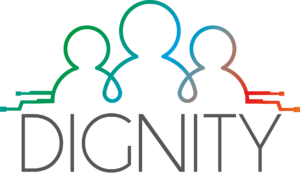
Google Maps is a digital journey planning platform which can be accessed through web browsers (desktop/laptop interface focusses on journey planning) and standalone apps (which focus on real-time navigation). Its navigation feature provides the option to get easy, turn-by-turn navigation to places. Maps shows the directions and uses real-time traffic information to find the best route to the desired destination. With voice navigation, the user could hear traffic alerts, where to turn, which lane to use, and if there is a better route. Directions can be obtained for driving, public transit, walking, or biking. Whenever there are multiple routes available, the best route to the destination is highlighted in blue. Other alternative routes are shown in grey on the map.
Category: Digital journey planning services/platforms
Developer: Google
Main function: Digital journey planning service/platform
What is the main sub-function of the service/product: Navigation
Target group(s): General public/other
Countries/cities of operation: 200+ countries and territories (https://developers.google.com/maps/coverage)
Technologies needed to use the service:
- Smartphone or tablet (without internet connection) – Users can save an area from Google Maps to their phone or tablet and use it when they are offline. Users can get driving directions offline, but not transit, bicycling, or walking directions. In the driving directions, they will not have traffic info, alternate routes, or lane guidance.
- Laptop, desktop, tablet or smartphone with internet connection for journey planning
- Tablet or smartphone with mobile internet connection on the way for real-time turn-by-turn navigation
Is there a non-digital way to use this service or product? No
Why is this a good example?
| Reason(s) | Free to download and use |
| More details | The sophistication and breadth of the functionality combined with its use for free makes it a very popular app, and because it is free, it is accessible to people on low income. |
| Tags | Cost, Specific user groups- People with low income |
| Reason(s) | Integration with related tasks – extensive functionality and information |
| More details | Google Maps is able to draw upon a continually updated dataset to provide real-time route timings, guidance and contextual information for users. Examples of related tasks include finding a fuel station en route to a destination, finding a restaurant near a destination, and being able to find details of the restaurant including if it will be open at the estimated arrival time and phone number which can be used to dial it directly (on a smartphone). |
| Tags | Functionality- Integration of services |
| Reason(s) | Usability – Clear directions |
| More details | Google maps can provide clear turn by turn directions, correctly timed based on the person’s current location and speed of mode of transport. These are generally provided enough in advance of a turn or navigation decision that the person can process them without rushing, but not so far in advance that it is unclear what junction they apply to. The current location is marked clearly on the map. The user can move around the map to get an idea of their surroundings and look further ahead in their journey, and a prominent button enables the user to re-centre the map on their current location. |
| Tags | Usability |
| Reason(s) | Accessibility via voice navigation |
| More details | The app includes a voice navigation feature which supports use by people with visual impairments and people with difficulties reading. It also enables hands free use which is valuable when driving, cycling or using a manual wheelchair. |
| Tags | Accessibility, Usability-Multimodality |
| Reason(s) | Information on multiple transport modes |
| More details | Google maps provides information on journeys on foot, by bike, car, taxi and public transport. This makes it useful for a wide range of users in different areas. |
| Tags | Functionality-Integration of services |
| Reason(s) | Available in multiple countries and languages |
| More details | Google maps works in multiple countries and multiple languages, making it particularly valuable for immigrants and visitors to the country. Users may be familiar with it from their home country and do not need to download and familiarise themselves with a new service or product when they move to another country. Being available in their own language also removes language barriers and makes it easier for them to find their way around in an unfamiliar country. |
| Tags | International aspects, Specific user groups-Migrants |
| Reason(s) | Real-time traffic updates and alternative route options |
| More details | The app provides direct and in-time information about the situation on the road. It shows alternative routes and traffic jam information. |
| Tags | Functionality-Real-time information |
If you would like to know more about why this product is part of this catalogue or what aspects of this example are specifically appropriate, click here to view the full DIGNITY Interactive Catalogue, which contains further information.

